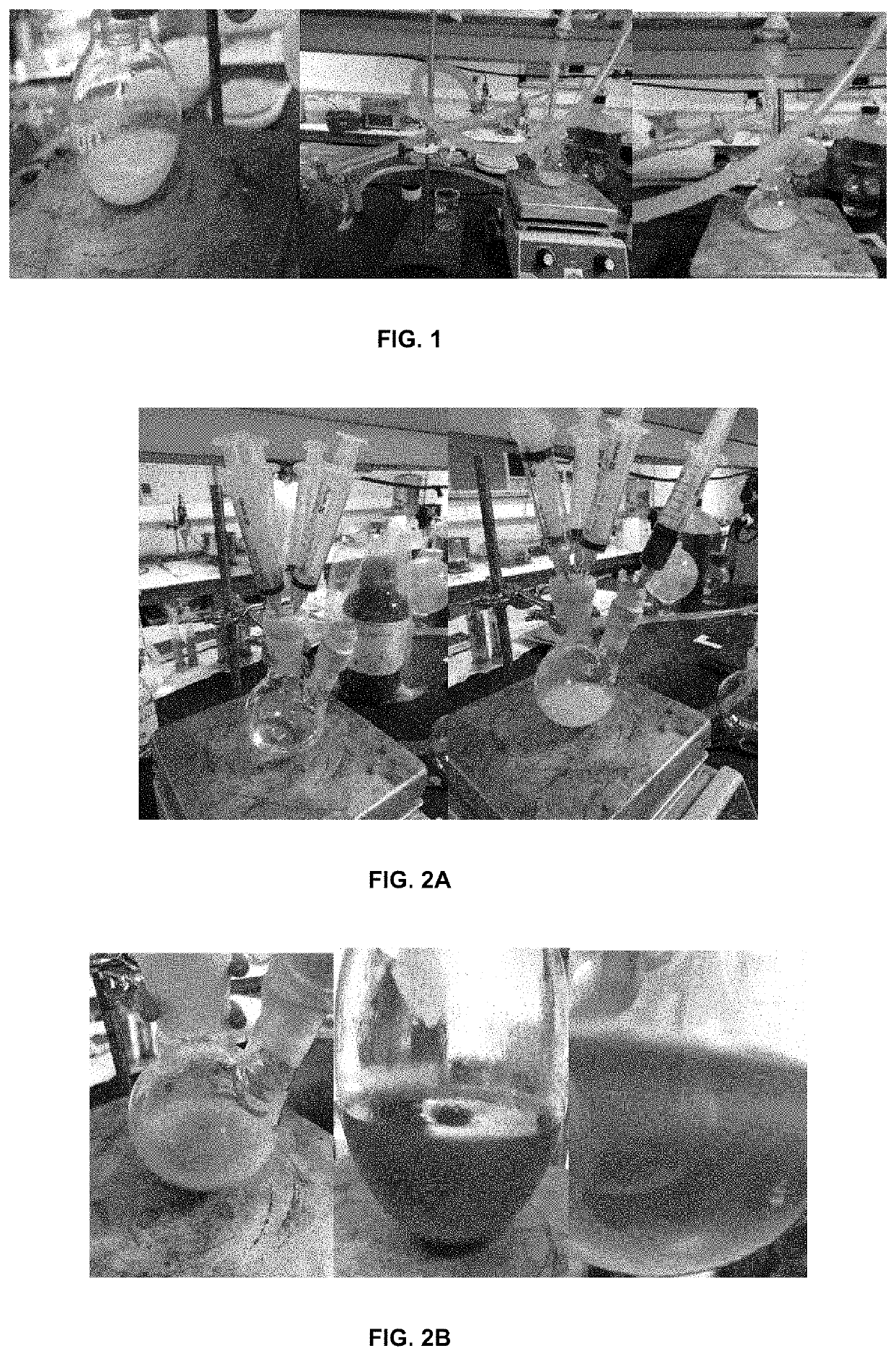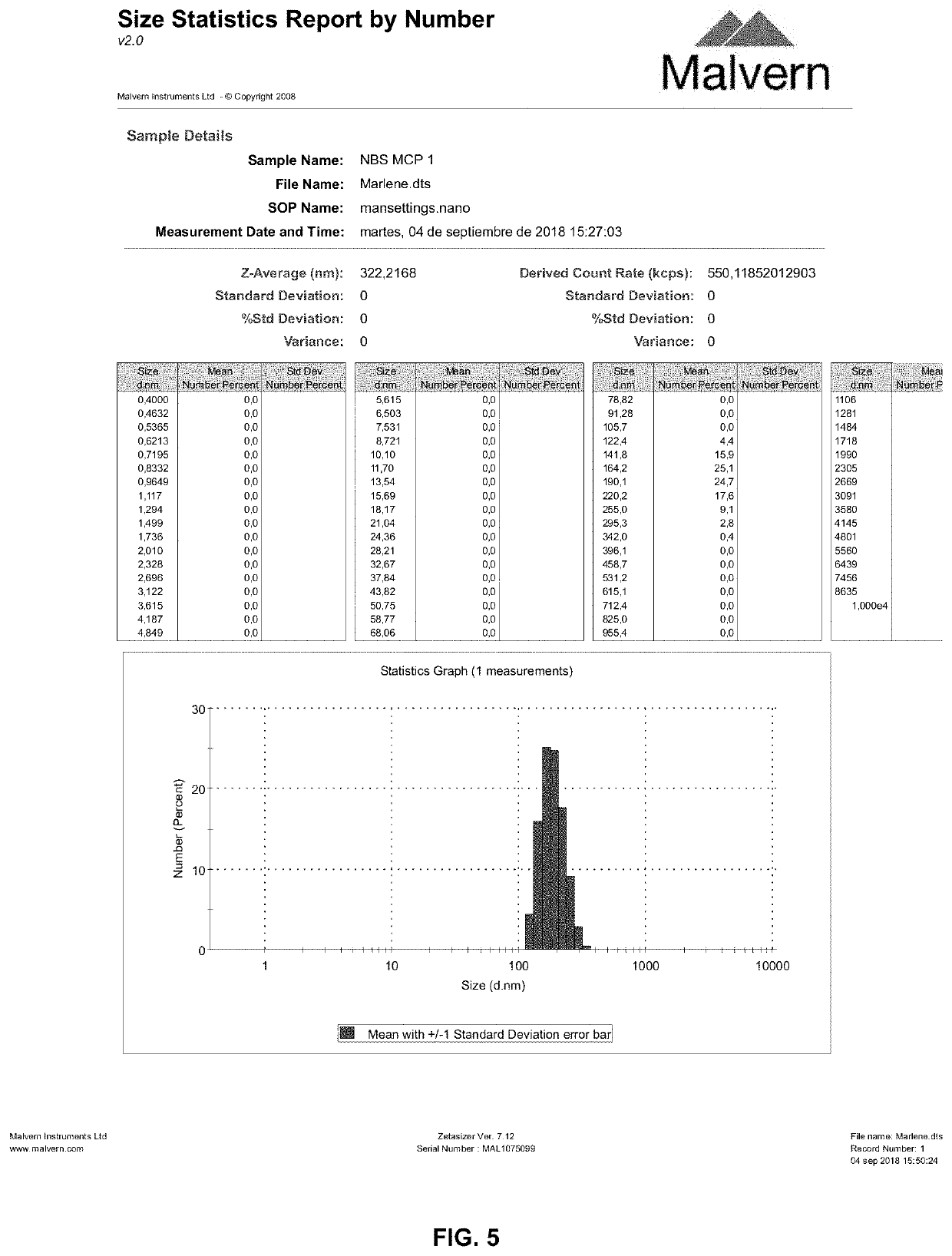Modified 1-methylcyclopropene (1-mcp) nanobubbles
a technology of 1methylcyclopropene and nanobubbles, which is applied in the direction of nanotechnology, material nanotechnology, fruits/vegetable preservation by coating, etc., can solve the problems of kmno4 creating risky situations, the enclosure used must be highly airtight, and the document does not disclose the modification of 1-mcp nanobubbles, etc., to achieve the effect of high degree of stability
- Summary
- Abstract
- Description
- Claims
- Application Information
AI Technical Summary
Benefits of technology
Problems solved by technology
Method used
Image
Examples
application examples
Synthesis of 1-methylcyclopropene
[0061]The synthesis of 1-Methylcyclopropene was carried out using two methods:
Method 1: Synthesis of 1-MCP in a Simple Distillation System.
[0062]In a 250 mL round-bottom double-necked flask, which is connected to a simple distillation system, 10 mL of dry tetrahydrofuran and 2 mL of 1-chloromethylpropene is added (FIG. 1), with both reagents being injected through a chemical septum. The closed system was kept in an inert argon atmosphere, and the reaction mixture was stirred for 30 minutes at a temperature of 30° C. After the homogenization time had elapsed, 22 mL of phenyllithium was added, the reaction was maintained for an additional 30 minutes, with constant stirring, and the reaction temperature spontaneously varied from 30° C. to 50° C. (Sample 1). The released gases were obtained by distillation.
Method 2: Synthesis of 1-MCP with Gas Collection.
[0063]In a 250 mL round-bottom double-necked flask, (where both necks were sealed with chemical septa...
PUM
 Login to View More
Login to View More Abstract
Description
Claims
Application Information
 Login to View More
Login to View More - R&D
- Intellectual Property
- Life Sciences
- Materials
- Tech Scout
- Unparalleled Data Quality
- Higher Quality Content
- 60% Fewer Hallucinations
Browse by: Latest US Patents, China's latest patents, Technical Efficacy Thesaurus, Application Domain, Technology Topic, Popular Technical Reports.
© 2025 PatSnap. All rights reserved.Legal|Privacy policy|Modern Slavery Act Transparency Statement|Sitemap|About US| Contact US: help@patsnap.com



